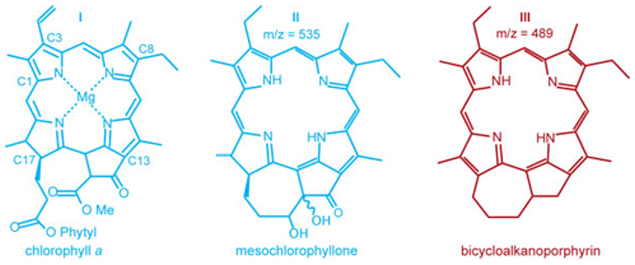Biomarker and compound-specific isotope studies

One of the unique tasks of compound-specific isotope studies is attributing a biological source to individual molecules. Most of my interests center on understanding primary producer communities and their response to climate transitions. Chlorophyll and its derivatives are the perfect molecule because the source is linked directly to primary photosynthate. Chlorophylls (I), chlorins (II) and porphyrins (III) are the target molecules for my biomarker and compound-specific isotope studies.
Nitrogen is present in many phases in sediments. Thus, bulk nitrogen isotope data are not likely to always be representative of N derived from primary producer biomass. I worked to isolate primary N-isotopic signals through the isotopic composition of nanomolar quantities of chlorophyll derived porphyrins. These types of analyses, while analytically challenging, provide a measure of specificity that is not possible with bulk analyses alone. My work through OAE 2 suggests that the N-cycle response to OAE 2 is significantly larger than what is observed in bulk nitrogen isotope records.
The diversity of porphyrin structures are additionally useful as biomarkers and indicators of the redox conditions in the depositional environment; I utilize these data to enhance our understanding of the environment of deposition.
Collaborators: Brendan J. Keely (University of York, UK; Michael A. Arthur and Katherine H. Freeman (PSU)
